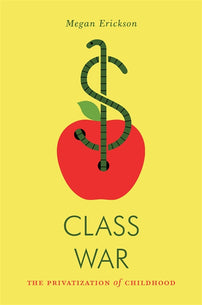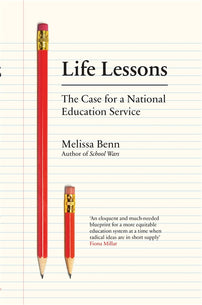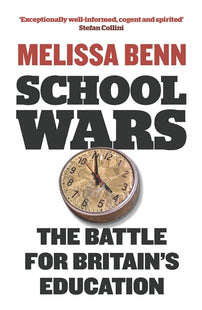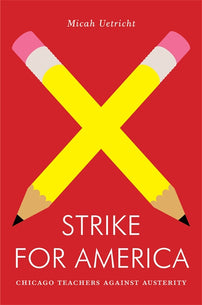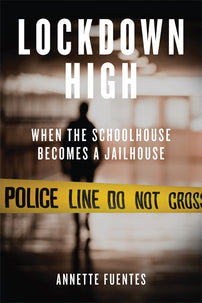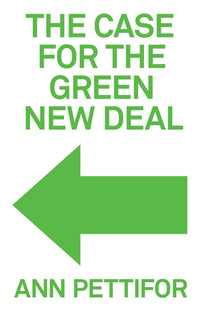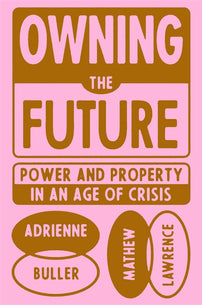Something’s in the Air
When a Philadelphia public high school teacher discovered dangerously high levels of CO2 in her classroom, it kicked off a fight about inequality, capitalism and the power of socialist organizing in America's crumbling public school system.

When Philadelphia public high school teacher Jess Way worked with her students to measure carbon dioxide levels in their classroom, they didn’t know what to expect. But they could guess. Their school building at Franklin Learning Center was closed down in 2019, due to facilities issues, placing it at the center of toxic facilities fights in the city which have been ongoing due to the more than $4 billion backlog of deferred maintenance in the district. Way and her students thought the airflow wouldn’t be safe that day – a big problem particularly in the midst of an airborne virus pandemic.
What they found was even worse. According to the National Institutes of Health, a classroom becomes unhealthy as carbon dioxide approaches 1,000 parts per million concentration (ppm). Their classroom, they discovered, had on average 900 ppm, with the highest reading coming in at 2,480 ppm. They were so shocked, in fact, that Way encouraged the students to testify at a recent Philadelphia Board of Education meeting.
When [the ppm level] gets this high, some of the symptoms include headaches, sleepiness, and stagnant stale stuffy air, and poor concentration. So as you can see, when a student is put into this type of environment, it's really hard for them to concentrate. And it's not just affecting their health, but their grades. The higher the ppm goes, the worse it gets. If it gets too high, it could lead to brain damage, a coma, or even death.
Typically, school leaders don’t respond directly to public comments at school board meetings. But this testimony inspired Superintendent William R. Hite, Jr. – who has overseen the District for ten years and is leaving in June – to say something.
“Ladies, thank you for coming to share the information. You rightly point out that in 2019 we did an air quality review at your school, and as a result of that, we shut down the school as you indicated. Later we cleaned out all the air vents in the school. I appreciate the project. I'm going to have our chief of operations, Reggie McNeil, and come out and meet with you. He'll be very interested in the results and coming up with solutions for what you've found.”
The Chair of the Board followed up this comment requesting that Hite inform the board of the result of McNeil’s visit. The subsequent visit from district officials was perhaps more shocking than their data.
In an email to me, Way said that the officials "totally discredited everything the kids said." They then told the students that the monitors they’d used for the measurement "weren't any good," and that they should only worry if the level of carbon dioxide in the room "is above 5000 ppm."
Citizen science, socialist science
Lizzie Rothwell is an architect, parent, and organizer in Philadelphia. During the fracas around whether schools should open amidst the new waves of COVID variants in early 2022, she got involved with the citizen science campaign that is taking root across America. Parents worked with their children to put carbon dioxide monitors in kids’ backpacks, measuring the airflow in classrooms. Low CO2 levels means fresh air turnover, indicating that the virus would be less likely to hang around.
[book-strip index="1" style="buy"]Meanwhile, the Philadelphia chapter of the Democratic Socialists of America had been engaged in the national fight for a Green New Deal for Schools, with a recent legislative push starting in 2021. A report put together by had proposed a spending program to build and staff green school buildings. The legislation was introduced by Congressman Jamaal Bowman during the Build Back Better budget reconciliation process in 2021.
I was involved with the research and organizing around this legislation. An education researcher specializing in school finance and ideology, I helped write certain sections of the c+cp report. I was also involved in Philly DSA’s education justice committee and Green New Deal commission at the local level.
I first met Rothwell while we were organizing for education justice in Philadelphia, and we began to talk about her and her son Luke’s work measuring CO2 in the city’s schools. Around the time the campaign was building traction, she and Luke were profiled in the New York Times along with parents in other cities. As the piece was in production, we wanted to scale up the project by securing more monitors, connecting with parents and teachers around the district concerned with school facilities, and ultimately to include the tactic as part of our Green New Deal for Schools organizing. What better way to make the case for transformative green school modernization than by exposing the lack airflow in classrooms?
We also wanted to use the tactic to push for short-term and medium-term demands being made in the city’s left coalitions around school safety and funding: parents pushing for outdoor lunches at schools and Tax the Rich PHL were organizing for a wealth tax at the city level that could get more funding for the district’s capital program.
The sub-campaign took off. Philly DSA used member funds to purchase five more monitors from AraNet and we distributed these to parents in our organizing networks. DSA members created a website that crunched the data coming in from those monitors and presented the measurements at each school.
The Times article came out and the campaign kept rolling. AraNet reached out to Rothwell and donated five more monitors, which we distributed to more parents. We also started reaching out to teachers organizing at the building level. One of those teachers was Jess Way, who used the monitor in the science program with her students.
Air is a social relation
As the communist educational theorist Derek R. Ford has written:
Factors such as race, class, age, and education level all affect the degree to which one is exposed to polluted air. This inequality is likely tied to the spatial expressions of racism and capitalism—as pollution levels were found to be highest in urban areas—and it will certainly affect the schoolhouse’s air conditions...The air envelopes us and binds us together; it is a necessary condition for being and relating. And yet it is difficult to grasp. It is often only when something is ‘wrong’ with the air that we take notice. The technologies of controlling the air’s quality, temperature, humidity, and flow conspire in an effort to make the air unnoticeable. But these technologies themselves act in unforeseen ways on air, lives, bodies, and social relations.
Ford concludes that air is a social relation in which we can find the deeper inequalities of social structure. Our organizing to measure CO2 in Philadelphia school buildings is making this plain. The School District of Philadelphia, as a hyper-local government entity, can only do so much in the struggle to keep up with its aging and crumbling buildings. While progressive city councilmember Helen Gym has held hearings on school modernization, efforts to secure adequate financing crash on the rocks of American capitalism.
[book-strip index="2" style="buy"]While the district officials should have handled the situation better, the root of the problem is deeper than their knee-jerk dismissal of the students’ research to save face. The School District can only do so much to keep up with its aging buildings. While councilmember Helen Gym has held hearings on school modernization, efforts to secure adequate financing crash on the rocks of American capitalism. (And the American Rescue Plan is nowhere near enough; translating to just $325 million for district capital projects.)
We need transformative financial policies to handle Philadelphia’s school buildings. State legislators could open PlanCon and fund it with taxes rather than bonds. Federal legislators could pass the Rebuild America’s Schools Act. Congress could pass Bowman’s Green New Deal for Public Schools Act. They could create a government sponsored entity (GSE) to intervene in municipal bond markets, or better yet a National Investment Authority for public infrastructure like school buildings.
These demands point to a conclusion about organizing in this moment. In this interregnum where the old is dying and the new struggles to be born, our CO2 campaign points to a kind of generative socialist organizing. Our committee is an active member of Our City Our Schools, a coalition of left education groups working on education. By organizing with this movement ecology, focusing on the issue of school infrastructure, socialists can see good outcomes. Fighting in the trenches, particularly connecting school ventilation to the wider class struggle, is the kind of slow, grinding, hyper-local work that over time builds trust, capacity and contributes to maneuvers on key terrains.
As one example, after a twitter thread about the incident described in this essay went somewhat viral, a handful of local parent organizers, scientists, and students reached out to us to get involved in the campaign. Two teachers at another school got interested in measuring the CO2 in classrooms with their students. Then Rothwell and I were interviewed on Philadelphia’s WURD radio about what happened to the students and our organizing around it, where we connected these struggles to Paul Prescod’s insurgent DSA-backed campaign for Pennsylvania state senate. Amidst and between electoral cycles, where socialists vie for footholds in state apparatuses, campaigns like the CO2 show us why we can’t and shouldn’t be disheartened, that something is indeed in the air.
[book-strip index="3" style="display"]David I. Backer (@schooldaves) is an associate professor of educational foundations and policy studies at West Chester University. He writes a weekly newsletter on education, finance, and socialism called Schooling in Socialist America.

